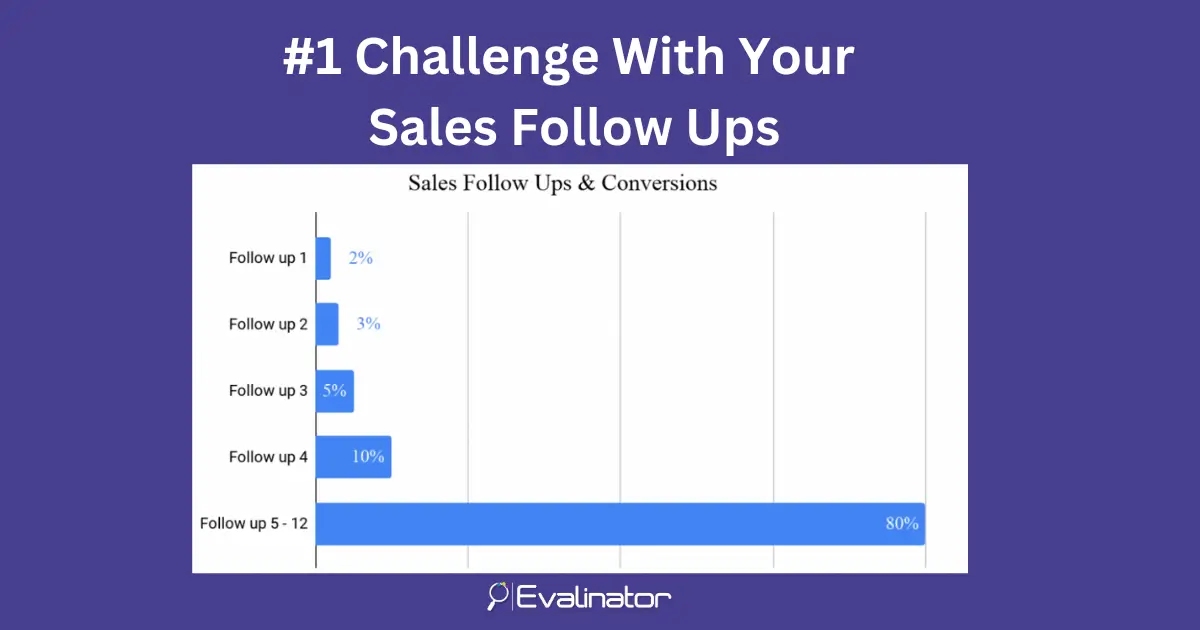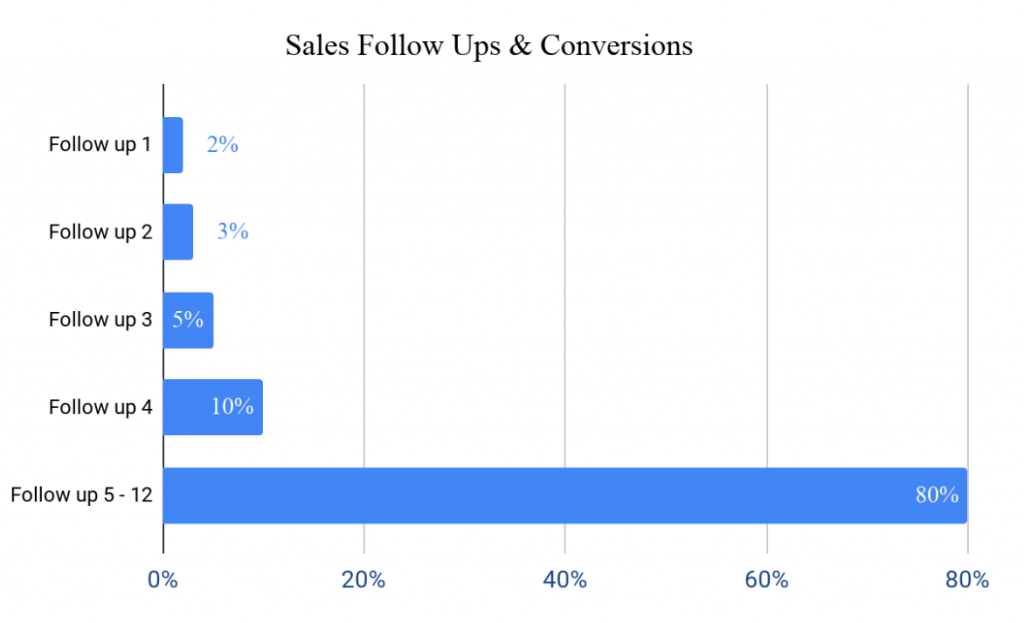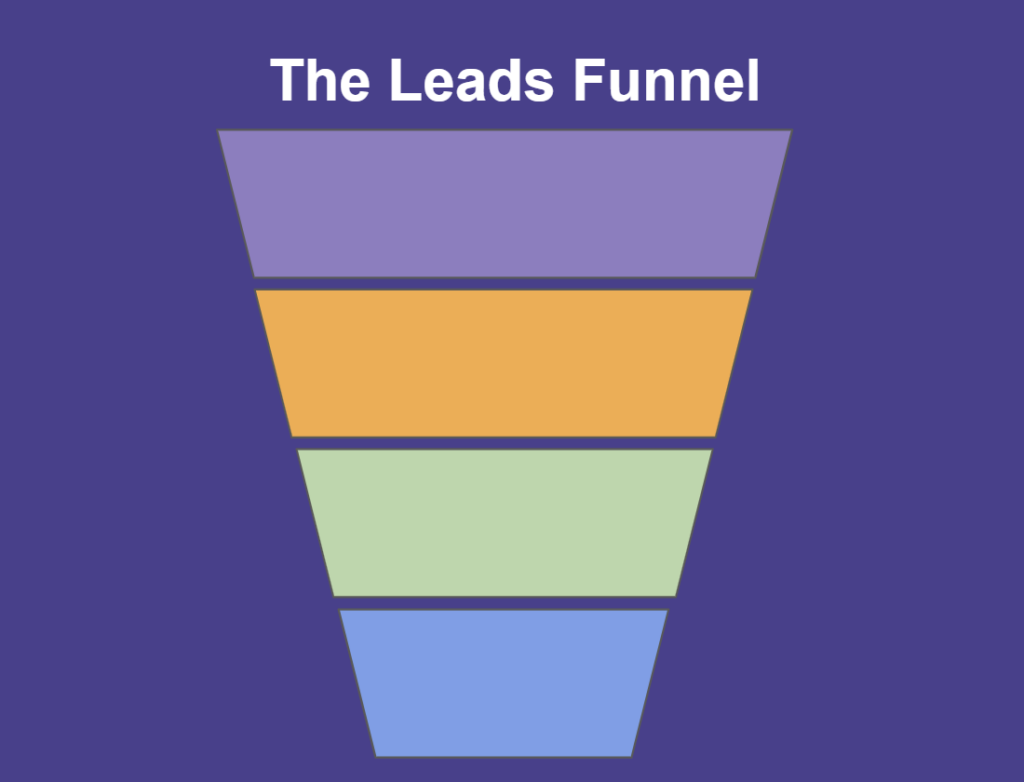


Most sales transactions require 5 or more follow-ups to get closer to a good next step.
Only 2% of deals move forward in the first sales follow up.
However, only 8% of us are able to consistently follow up!

Of course, there has been much written about the need to systematically follow up, don’t accept NO for an answer, and try to personalize, personalize, personalize!
But despite all of the available tips and tricks about testing different subject lines, style of writing, length of emails, etc., the underlying challenge is about meaningful personalization.
Salespersons run out of personalized material to share in their sales follow-up emails. Instead, they fall back to “just checking in”, or “just wanted to share an update that…”.
Sending multiple sales follow-up emails of any kind does result in you being top of the inbox. So it’s a good strategy to implement if you don’t have anything better.
But whether you like it or not, that strategy of “just send something with a call to action” is also being used by everyone else. It’s becoming easier by the day too. Sales and marketing automation tools can send emails automatically on your behalf. Automated AI email marketing tools are allowing for artificial personalization too.
So generic follow-ups are losing their value in the eyes of your clients.
The real challenge is to build a trust connection that engages your prospects. It should also be “relevant” to your buyer’s journey.
One way to do that is to include meaningful content in your sales follow-up emails.
Meaningful content is something that helps the customers you are sending it to.
It’s useful AND personalized as much as possible. That means it should be aligned to the stage of buying your buyer is in.
Everyone sends product updates, the latest corporate announcements, helpful generic tips, and so on. That content is focused on the seller. That content is useful but it doesn’t help your prospect or client with meeting their goals at this time.
With the first sales follow-up, you can refer to your in-person interactions and position your product or service.
But with the second email or phone call onward, it is not easy to write something meaningful except the good old “I’m checking in to see if now is a good time to reconnect…” or “here are top 10 reasons why….”
Instead, what if you could say
That would surely be far more interesting to the prospect, and more likely to elicit a response while raising the trust index.
If you an online lead coming in, then this blog on online lead generation will help you get the rich data you need to personalize your sales follow up with meaningful and highly relevant information.
If you are following up after the first meeting, then meaningful sales follow-up is possible only if you have discussed customer goals in the first interaction.
But a discussion on customer goals which is not generic and goes below the surface doesn’t happen too often. Most of the time, we are just keen to share how great our product or service is without getting to what the customer could actually be struggling with.
It’s a difficult catch-22 with a “product first” presentation. After all, you don’t fully know what the customer’s problems are, and the customer is hesitant to share them without knowing more about you first. So it makes sense to build credibility right off the bat, and do your pitch.
That’s where a thoughtfully crafted interactive needs assessment comes in.
 Most sellers do know who their buyers are and their general pain points.
Most sellers do know who their buyers are and their general pain points.
So, adopting a consultative selling process can help you validate those pain areas and begin the interaction on the right foot.
It’s not difficult to implement a consultative approach that uncovers enough information to have meaningful and actionable follow ups.
Just follow these steps:
As you can imagine, having the answers in #3 leads to informed sales follow-up communications.
So, what we are doing with Evalinator is to help you formalize those icebreaker and exploratory conversations into an actionable model. Consider these 2 steps added to the list above:
As you have more conversations with other prospects, the data set becomes richer, and you are then able to engage with meaningful statistics and insights that gives rise to better marketing and lead generation too.
If this approach sounds even remotely reasonable to you, then there is nothing better than testing it out! Get started with a free 2 week trial and craft your first sales needs assessment. There are several templates available, and we are here to help you succeed.
We are here to help. So feel free to set up a complimentary discovery session.
References: 1) Sales follow-up study by Marketing Donut.
I Want to Turbo-Charge My Sales Follow-ups

Feeling frustrated with lead generation?
Take this free, 5-minute quiz and get more prospects into your leads funnel.
Instant Results. Actionable recommendations. Email required.
Find Your Score >>